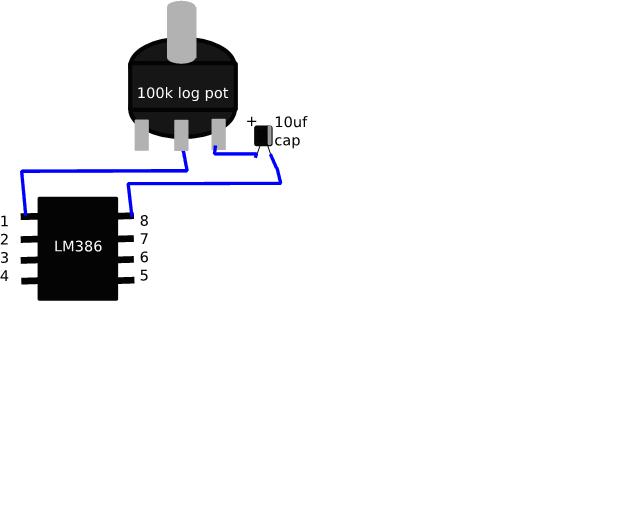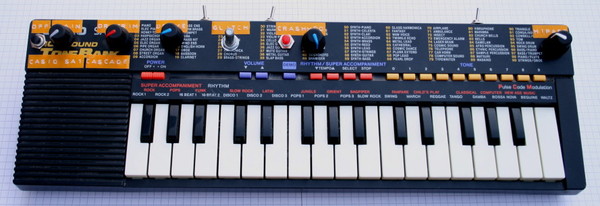Download the pdf here
Recap: What is circuit bending?
Circuit bending is the (amusingly silly) name given to hacking electronics (usually sound or video devices) to enable the original device to do something it was not originally intended to do. For example hacking audio output from a cheap kids keyboard or adding pitch control to sound toys, even onto more advanced stuff like adding LFO's and filters or even video output from a non video device! However for the sake of my sanity, in this article I'll be talking about circuit bending for the purpose of sound and sampling for music.
As a continuation of last issue's article on circuit bending I thought it would be fun to delve into the depths of one of the most hacked keyboard series – the CASIO SA series, specifically the Casio SA-2.
WARNING / DISCLAIMER: At this point it is worth mentioning that you really shouldn't mess with anything with main power (plugged in) and stick to battery powered devices til' you really know what you are doing unless you are nuts. Also it’s not my problem if you fry your little keyboard.
Opening the little beastie up
Grab yourself a screwdriver and delve into the keyboard. Note that the front of the keyboard has a large amount of plastic clips attaching it to the bottom half – you may need the help of a flat-head screwdriver. Also make sure the batteries are out! You should be greeted with a board that looks a little something like this:

| "The main aim here with this keyboard is to crash it out in interesting ways" |
See those two suspicious big chips? Those are where most of the bends are! Basically these old keyboards normally have controller IC’s on the board for doing things like controlling the keyboard matrix and also amplifying the audio and generating or playing back audio data. The main aim here with this keyboard is to crash it out in interesting ways, making it ‘write’ its own bizarre melodies, effecting the audio output, or adding in functionality that normally isn’t available. Take a look at the following vaguely scary diagram:

This is a diagram of most (if not all) of the available mods you can perform on the Casio SA-2 keyboard. As you can see you are able to add in functionality for things like drum triggers, and also select new sounds that are hidden from the sound back of the keyboard, by flipping the hidden sound select switch and using the first 5 keys of the keyboard as extra sound select buttons. This is possible as the SA series of keyboards shared a chipset and the early versions of the Casio SA (the SA-1) had 100 sounds selectable via 10 numeric push button selection switches – the SA-2 only has 4. Further modifications allow you to set the keyboard matrix to 5th’s, allowing you to play 5ths using only one key (great fun).
| "By far the most interesting modification is adding in the glitch controls" |
By far the most interesting modification is adding in the glitch controls. Using a combination of touch points (wiring up something conductive like a nut+bolt on the case), pots, and buttons, one is able to glitch out the keyboard CPU and create wonderful looping melodies and drum beats that evolve and change over time. Try switching off the speaker via the speaker on/off switch and just utilizing the jack output; this will create more interesting sounds as the keyboard will be drawing less power from the battery. Also popping a log pot of 100k on the red lead running to the + speaker terminal will give you a greater control of the device's volume. Note: I certainly can’t take credit for all of these mods – although I certainly had a part in finding a few of them on the message boards. Special kudos to casperelectronics.com + the circuitbenders.co.uk forums for being awesome.
| "this will create more interesting sounds" |
General keyboard hacking tips: Another really good tip is related to amplifier chips – a lot of older keyboards also have separate OPAMP IC’s for amplification of audio – these are very easy to trick into giving very nice distortion/overdrive. Just googling the different IC ID numbers that are printed on the chips themselves is a good way of finding pinouts – what you are looking for is the input + output or GAIN pins of the amp IC. Here’s a ridiculously simple example via the LM386 OPAMP IC – an incredibly common (and cheap) component that is on a –LOT- of old keyboards:

On other AMP chips you can achieve a more unstable overdrive effect by feeding back the output pin’s output back into the chips input in a similar way to the above diagram. Anyway I hope you have enjoyed reading a little bit more about circuit bending – this is really a bit of a beginners project but in the next Zine I’ll be stepping into a bit more advanced territory with some details on building your own LFO’s and modifications to Stylophones – see you there!

pic of the Casio SA1 hacked. photo: Sim

pic of the Casio SA2 hacked. photo: Sim
Go back to articlelist |

